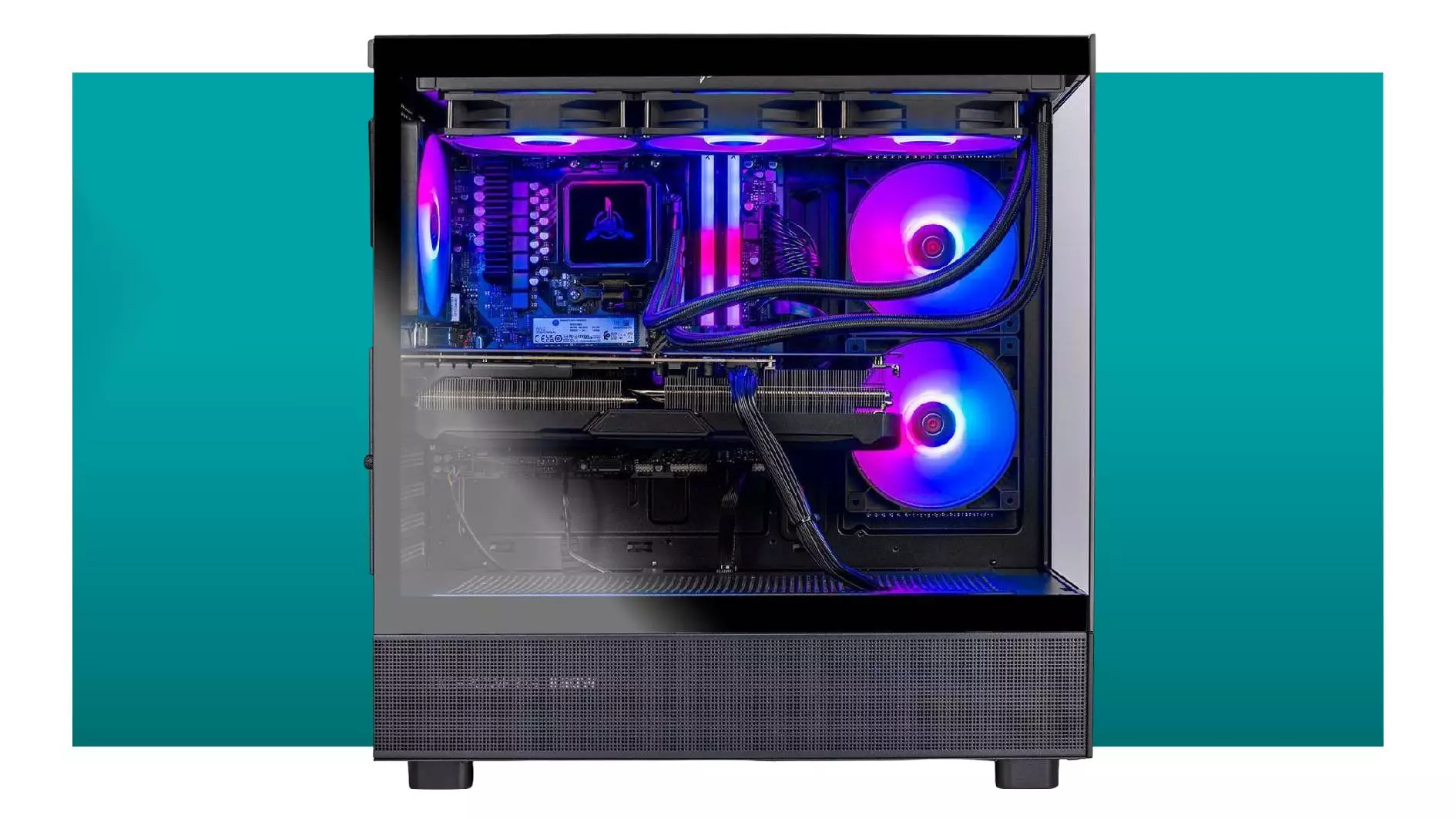As gaming enthusiasts eagerly seek the perfect balance between performance and price, the Skytech Azure gaming PC with the AMD RX 9070 XT has emerged as a prime contender. Priced at an accessible $1,800 at Newegg, this machine encapsulates what many gamers desire: robust capabilities without breaking the bank. Compared to its pricier counterparts, like the elite $4,900 models, the Raspberry Azure provides a realistic entry point for gamers who refuse to compromise on quality.
What stands out most about this rig is its all-AMD composition. This trend could be seen as a breath of fresh air for fans often inundated with Nvidia’s offerings, especially during times of market fluctuations. The RX 9070 XT alone offers performance levels that rival Nvidia’s RTX 5070 Ti, though with vital distinctions. While Nvidia fans often boast about enhanced ray tracing capabilities, this AMD GPU still holds its own in many demanding scenarios, proving that robust gaming experiences can exist beyond the Nvidia ecosystem.
Exceptional Hardware: The Core of Excellence
Underneath the sleek casing lies a meticulously crafted build that meets the demands of gamers. The heart of this system is powered by an eight-core Ryzen processor, a previously launched model still capable of performing at high levels for both gaming and productivity tasks. This versatility means that it can transition seamlessly from intense gaming sessions to more rigorous productivity applications, a crucial factor in today’s increasingly multitasking environments.
Moreover, with 32 GB of DDR5-5200 RAM and 2 TB of storage, this build is tailored for the modern gamer. The prevailing trend towards increasingly larger games necessitates ample storage, making the 2 TB a thoughtful addition. The RAM is adequately fast, allowing for smooth multitasking and minimal lag in performance, especially during high-demand scenarios.
A review of the power supply also inspires confidence. The 850 W PSU not only provides sufficient energy for intensive gaming but also leaves room for potential upgrades. This flexibility ensures that users can tweak their builds over time without immediate concern regarding power constraints.
Price vs. Performance: The Sweet Spot
In discussing affordability, the Skytech Azure setup shines. Competing models either skimp on essential features or present a significantly higher price tag, often necessitating compromises that just don’t stand up. Gaming at high resolutions without sacrificing crucial elements like RAM or storage often comes at a cost—until now. This configuration presents a case for valuing well-rounded capability over singular focus on brand loyalty or hype.
For savvy gamers who want to dive into high-end 1440p gameplay, these specs are ideally suited. Even the most demanding titles, such as “Black Myth: Wukong,” can be handled gracefully, achieving well over 100 frames per second with the right configurations. These performance metrics highlight that getting the most bang for your buck remains possible even in a competitive arena characterized by skyrocketing prices.
While alternatives exist, going for something less powerful typically involves cutting corners on critical components or downgrading to less potent CPUs. This configuration challenges the notion that affordability means reduced quality. Instead, it advocates for intelligent purchasing that prioritizes a balanced approach toward performance.
The Case for AMD: A New Era
The growing availability of solid AMD systems like the Skytech Azure RX 9070 XT signals an exciting shift in the gaming marketplace. As gamers rally for hardware that can deliver excellent performance at competitive prices, brands like Skytech are leading the charge in redefining the focus from merely high price tags to value-driven components. This strategic pivot invites AMD and its dedicated followers to step confidently onto the center stage, and the RX 9070 XT exemplifies that transition.
Ultimately, while the AMD gaming ecosystem might not have the same name recognition as Nvidia in niche areas, the core strength of builds like the Azure demonstrates that customers can expect nothing less than absolute performance and power. For anyone looking to immerse themselves in the next generation of gaming, this build is indeed a turning point—a perfectly compatible balance of price and performance that makes any naysayer reevaluate their stance.

